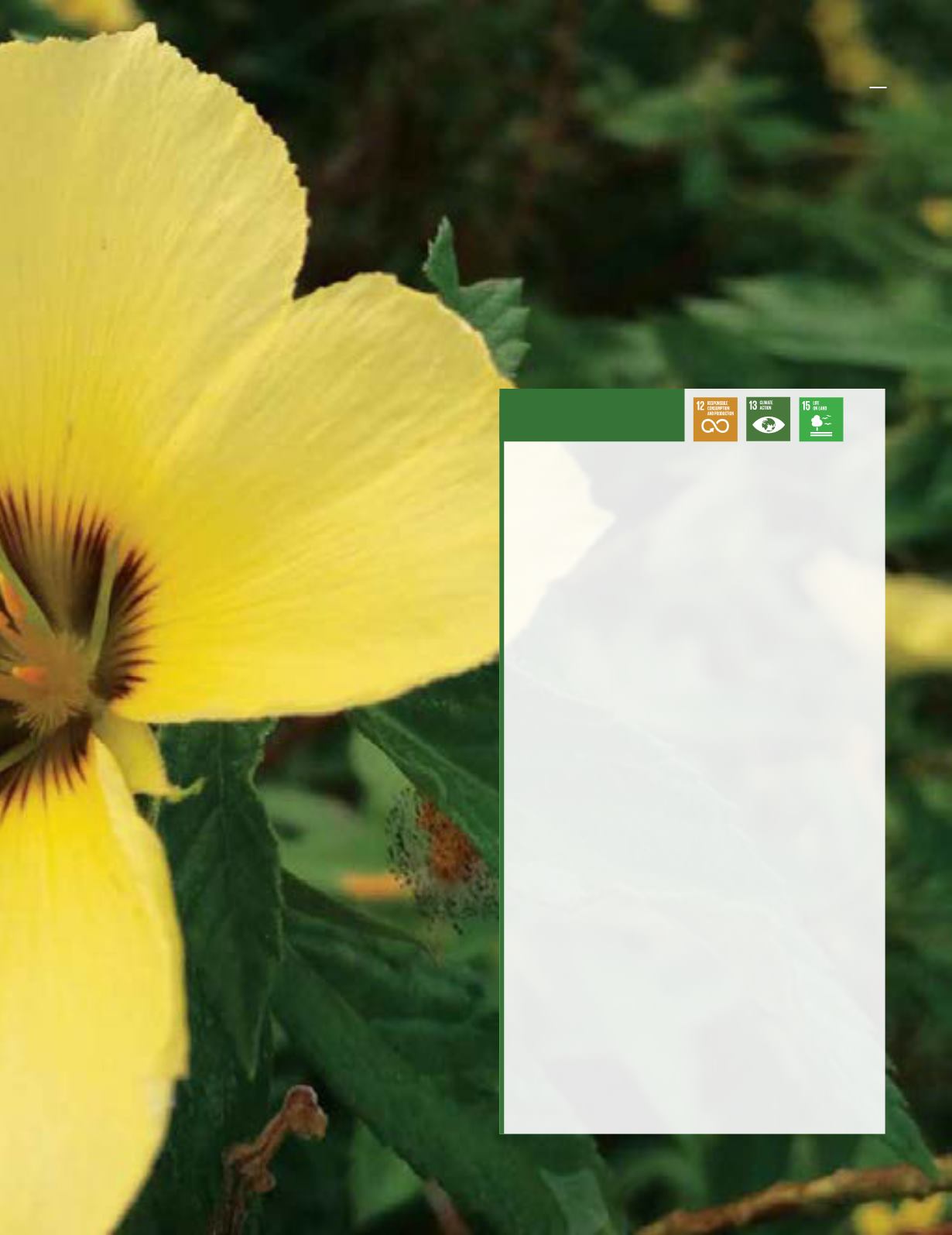

In order to minimize the use of synthetic
pesticides in our estates, we have employed
three of the industry’s most regarded eco-
warriors:
Cassia Cobanensis
Provides nectar as food for
parasitoids
(insects
whose larvae live as parasites which eventually
kill their host) associated with the nettle
caterpillar and bagworm, the most common
leaf-eating pest in oil palm plantations. A
parasitoid
spends the majority of its life
obtaining nourishment from the host organism
after which it eventually kills them and prevents
reproduction.
Cassia Cobanensis
grows well
in the open and therefore it is mainly planted
along the roadsides.
Turnera Subulata & Antigonon Leptopus
Flowering shrubs host a range of predators
of leaf-eating pests and hence are also very
effective in pest control.
These flowers fend off leaf-eating pests in
our oil palm plantations. Insect species that
feed on the leaves of oil palm trees can pose
major problems. Some are ravenous eaters that
can cause serious damage to oil palm leaves.
The leaves on palm trees contain chlorophyll
which the tree uses during photosynthesis
to generate energy. Fewer leaves mean less
energy for the trees, which in turn leads to
reduced growth and suppressed oil yields.
SPOTLIGHT STORY
environment
35










